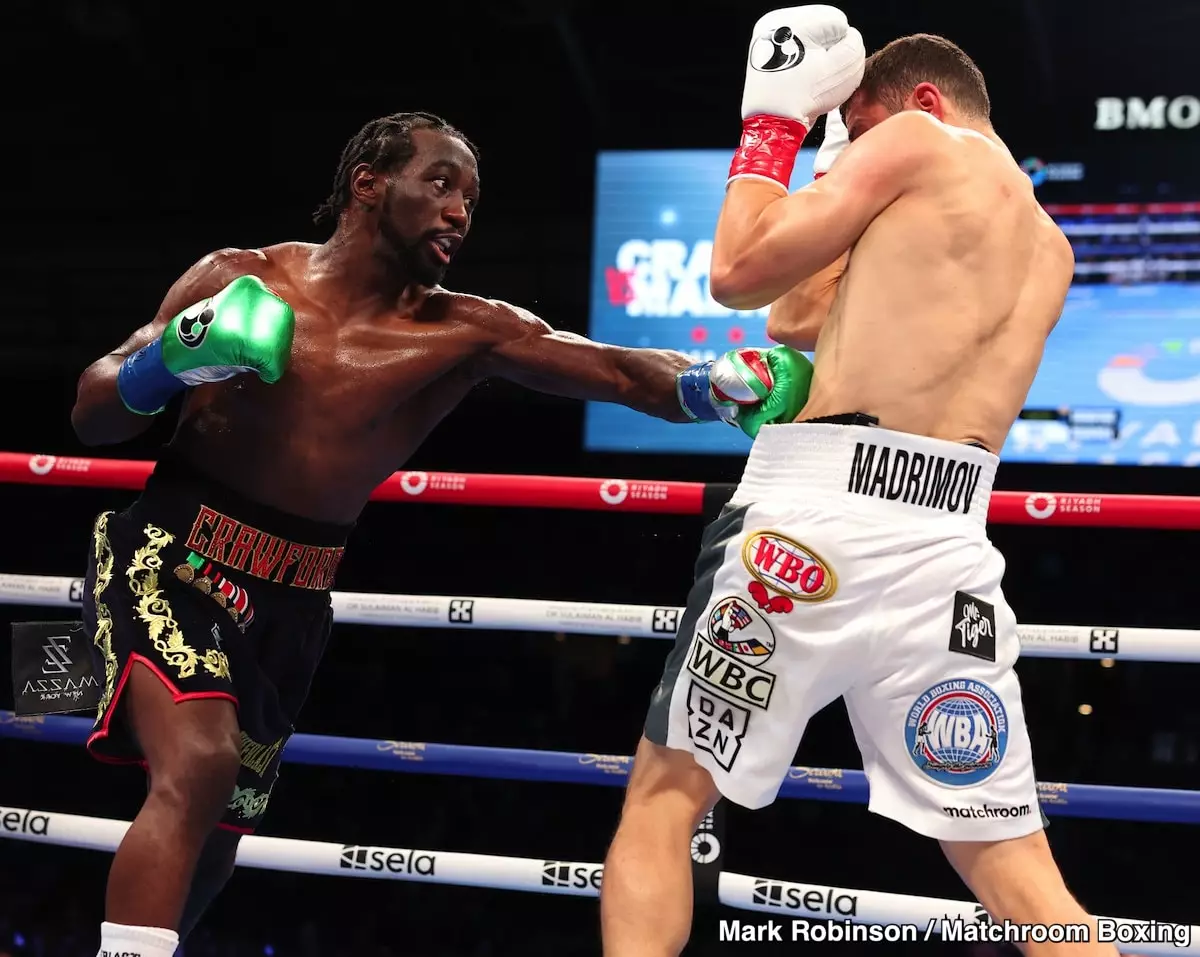Tim Bradley’s striking prediction that Terence Crawford will dismantle Canelo Alvarez should be taken with a hearty dose of scepticism. The former champion’s proclamation came after an early morning reflection that seems more rooted in personal admiration than in a thorough analysis of the fighters’ recent performances. The implications of Bradley’s assertion can’t be overlooked, as they not only reflect his unwavering support for Crawford but also highlight the complexities of boxing matchups and the narratives that shape them.
At 37, Crawford stands at a disadvantage age-wise compared to Canelo, who is also established yet younger. Aging significantly diminishes a fighter’s resilience and reflexes, two essential traits needed to withstand the power and skill a hardened champion such as Canelo can bring to the ring. Crawford has recently pushed his limits in the 154-pound division, achieving a narrow victory over Israil Madrimov that raised eyebrows—was this a sign of a declining fighter or someone still capable of overcoming challenges? If Bradley’s assertion were accurate, it would suggest that a 37-year-old Crawford could somehow find a second wind in the face of a younger, powerful opponent.
While experience is invaluable, it cannot substitute youthful vigor, a high output of energy, and the ability to absorb punishment in the ring—qualities that often distinctly favor Canelo in hypothetical matchups.
Tim Bradley’s confidence in Crawford appears to be incongruent with recent performances of both fighters. Observers have noted Crawford’s less-than-stellar display against Madrimov, a fight many feel he barely won. The image of Crawford as an aging gold panner, scraping by for minimal returns, speaks volumes about his current standing in the boxing world. The reality presents a stark contrast to the bravado that Bradley emits on social media.
Crawford’s success at lighter weights (135, 140, 147) often came against fighters who did not have the ability or skill set to offer true resistance. Without having bested someone of Canelo’s caliber in those earlier divisions, one might legitimately question Crawford’s readiness to face a unified champion at this stage in his career. It is hard to see a path wherein Crawford emerges victoriously against one of the sport’s modern legends.
Bradley’s unwavering faith in Crawford can be questioned from a critical standpoint. Historical performances and matchups must inform expectations; yet, there is an eagerness to shower praise on Crawford that does not seem to align with tangible evidence. If Crawford had found better opponents or fostered a more winning record against significant talents, perhaps his potential would command greater respect. Supporters may clamour for him, but reality shows a tougher narrative—one where past performances weigh significantly in present discussions.
In a sport that calls for results, it is disheartening to see someone like Crawford being touted for greatness without conclusive victories reflective of that greatness. While admiration for past achievements is common, it cannot overshadow the need for present-day capabilities and current competitiveness in shaping future outcomes.
Bradley’s advice to Devin Haney—urging a return to his roots in Mexico—strikes a similarly questionable note. This notion that returning to simpler circumstances will magically revitalize a fighter’s prowess is naive at best. Fighters evolve, and often the lessons learned from high-stakes encounters are more valuable than trying to ‘fix’ past mistakes in a vastly different environment.
The boxing world is littered with fighters who tried to revert to their ‘roots’ only to have their ambitions dashed, and Haney’s recent experiences against Ryan Garcia should be a crucial learning point—getting in the ring requires growth and adaptation, not regression.
Tim Bradley’s robust opinions, though delivered with passion, underscore a broader issue within sports commentary: the challenge of separating personal allegiance from objective analysis. Moving forward, fans and analysts alike must approach predictions with a level of skepticism—especially those grounded in fondness rather than in the realities of the current boxing landscape. As 2025 approaches, only the ring will reveal who is truly deserving of championship glory, and it will be a battle of attrition where true skill will reign supreme over preconceived notions.

